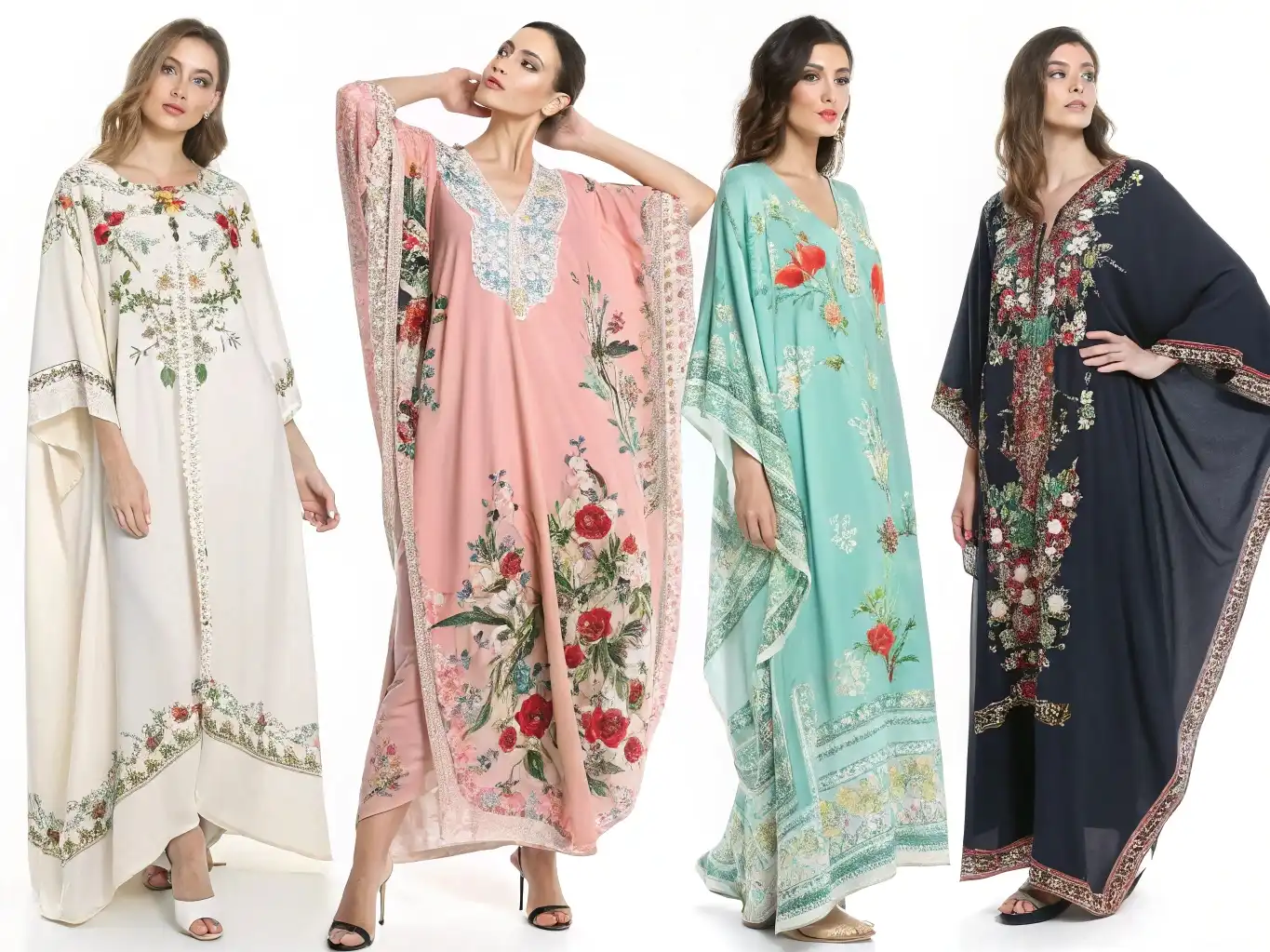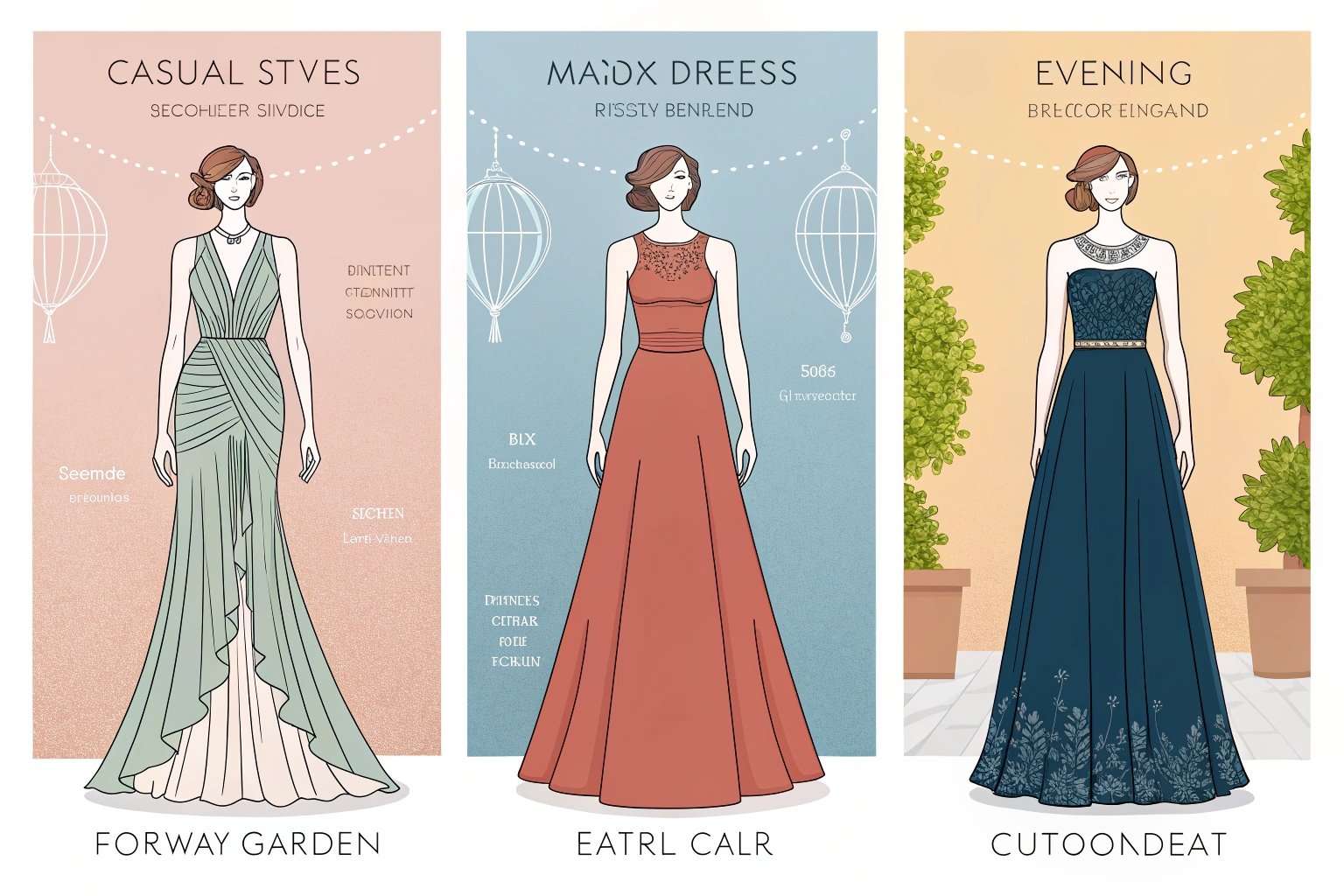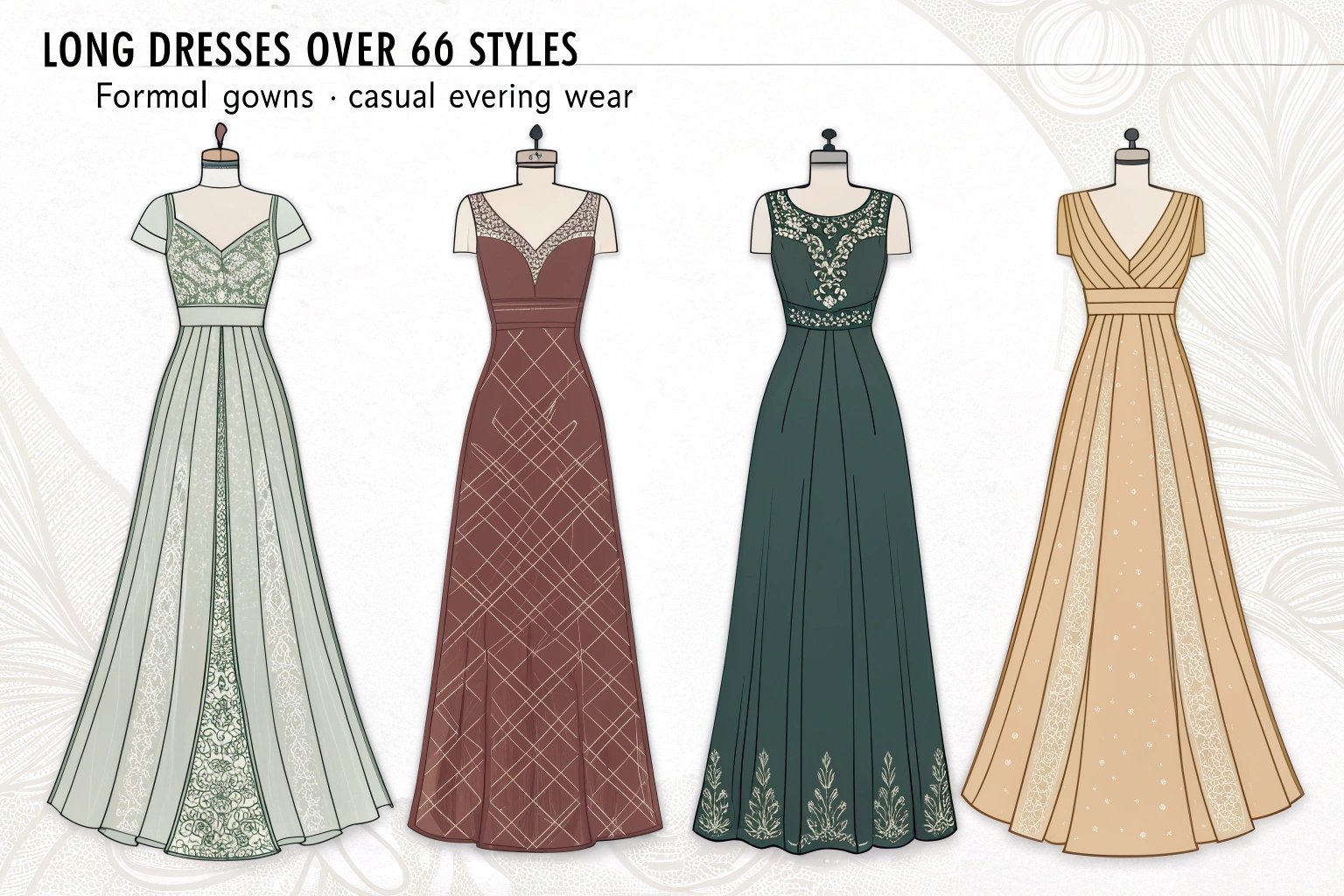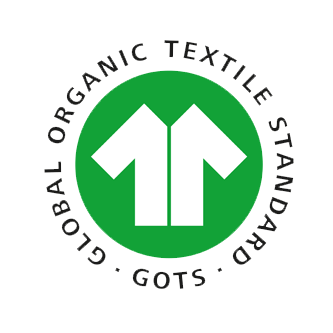Sleeves often get overlooked, yet they define a garment’s silhouette, comfort, and trend appeal.
There are over 70 types of sleeves in women’s fashion, each influencing style, function, and garment identity. Knowing them helps designers build collections that speak to multiple audiences.
I used to treat sleeves as just another step in the design process. That changed when one of my clients rejected a full collection—only because the sleeves didn’t align with her target demographic. Let’s make sure that never happens to you.
How are sleeve types categorized in fashion design?
Sleeves are typically grouped by their construction method, fit, length, and design detail.
Understanding how sleeves are categorized makes it easier to design collections, communicate with factories, and match trends with market needs.
Many fashion buyers only know the names of 5–10 sleeve types. But in factory-level production, every detail matters. Here’s how the 70+ types break down:
By Construction
- Set-in Sleeves: Attached at the shoulder seam (e.g., puff, cap, Juliet)
- Raglan Sleeves: Seam extends from neckline to underarm (e.g., baseball sleeve)
- Kimono Sleeves: Cut in one piece with the bodice (e.g., dolman, batwing)
- Dropped Shoulder Sleeves: Shoulder seam sits lower for relaxed fit
By Fit
| Fit Type | Examples | Impact |
|---|---|---|
| Fitted | Long fitted, glove sleeve | Sleek, elegant, body-con |
| Loose | Lantern, bishop, balloon | Flowy, dramatic, statement-making |
By Length
- Short: Cap, puff, flutter
- ¾ Length: Trumpet, bell, poet
- Long: Bishop, leg-of-mutton, kimono
By Design Detail
- Slit: Cold shoulder, open slit
- Layered: Double sleeve, ruffle
- Transformable: Zip-off, roll-tab
Sleeve types often overlap categories. For example, a bishop sleeve is both long and voluminous, but it’s also commonly set-in. Knowing this helps you explain product design better to buyers or manufacturers.
Which sleeve types are most popular in women’s fashion right now?
Trendy sleeves mix statement shapes with seasonal practicality.
Currently, the most in-demand sleeve styles are puff sleeves, bishop sleeves, flutter sleeves, and asymmetrical one-shoulder sleeves—especially in lightweight or sheer fabrics.
I attend trade shows and receive sourcing requests weekly. These four categories come up again and again:
Most Requested in 2025:
| Sleeve | Use Case | Style Impact |
|---|---|---|
| Puff | Blouses, dresses | Romantic, vintage-inspired |
| Bishop | Shirts, gowns | Elegant with volume |
| Flutter | Summer tops | Breezy, feminine |
| One-shoulder | Swimwear, clubwear | Modern, edgy |
For buyers like Emily Clarke, sleeves that create a bold look on social media are especially valuable. A dramatic sleeve instantly makes a garment more photogenic—an easy way to drive clicks and conversions.
What design factors should you consider when choosing sleeve types?
Choosing a sleeve isn’t just about style—it must match fabric, construction, and target audience.
Sleeves must align with fabric weight, garment structure, production constraints, and demographic expectations. Wrong choices can lead to high return rates or missed trend windows.
When clients ask for advice on sleeves, I ask them four key questions:
1. Who is your customer?
- Younger Gen Z: Bolder sleeves like balloon, leg-of-mutton
- Millennials: Cleaner shapes like bishop, flutter
- Officewear buyers: Minimalist cuts, straight sleeves
2. What fabric are you using?
| Fabric | Ideal Sleeve Types |
|---|---|
| Chiffon | Flutter, bishop |
| Denim | Set-in, rolled-up |
| Knit | Raglan, dolman |
3. What is your production capacity?
- Sleeves like puff and gigot need special machines and slow sewing lines.
- Simple sleeves can speed up lead times, ideal for trend-sensitive buyers.
4. How will it be worn?
- If layering is key, avoid overly voluminous sleeves.
- For outerwear, opt for structured lantern or dolman sleeves.
A smart sleeve choice can save production costs, improve the user experience, and increase reorder potential. A poor one can tank a product before it even hits shelves.
Raglan Sleeve
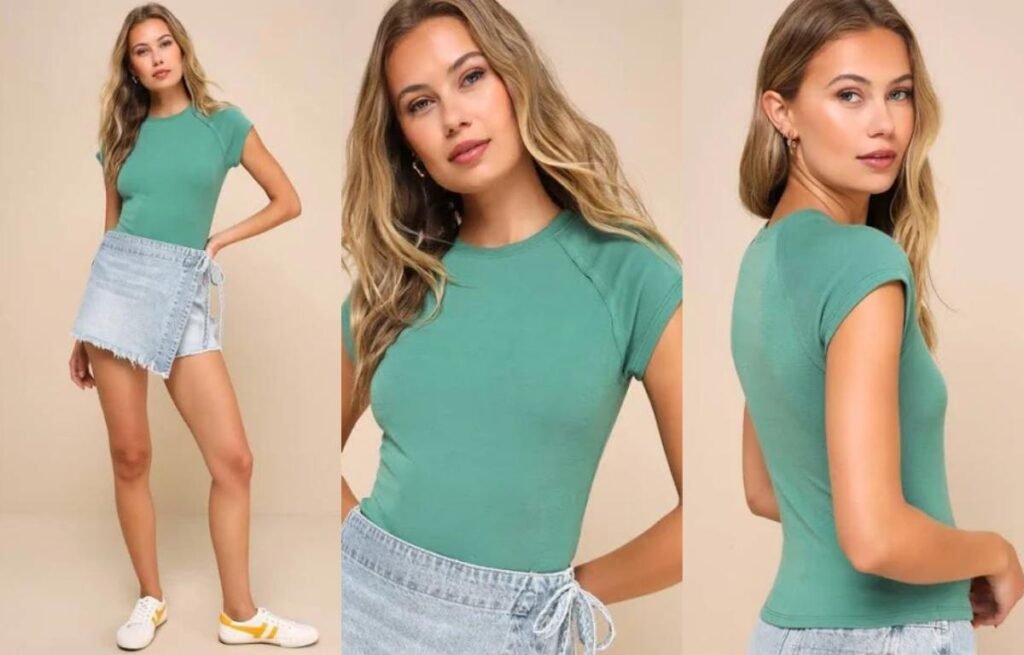
How is a raglan sleeve different from a standard set-in sleeve?
Many confuse raglan sleeves with regular ones, but they’re actually quite different.
Raglan sleeves are sewn from the neckline, not the shoulder, which gives them more freedom of movement and reduces fabric bulk around the shoulder.
You’ll often see raglan sleeves in sweatshirts, baseball tees, or relaxed jackets. But many fashion labels are now using them in dresses and outerwear too.
Key features of raglan sleeves:
- No traditional shoulder seam
- Sleeve extends from neckline to underarm
- Great for garments with high mobility
Raglan vs. Set-in Sleeves Comparison Table:
| Feature | Raglan Sleeve | Set-in Sleeve |
|---|---|---|
| Shoulder seam | None | Clearly defined |
| Attachment point | From neckline | From shoulder seam |
| Mobility | Higher, easier to move in | More fitted |
| Common use | Sportswear, casual wear | Formalwear, basics |
What fabrics and styles work best with raglan sleeves?
The right fabric makes the sleeve line stand out more.
Soft and stretchy fabrics like French terry, cotton blends, or knits highlight the comfort of raglan sleeves. For outerwear or dresses, structured fabrics like twill or denim add shape and polish.
I usually advise clients to pick fabrics based on function. For sporty or streetwear styles, go for knits and cotton. For something more fashion-forward, choose firmer, structured options.
Fabric suggestions by garment type:
- Sportswear: French terry, cotton-spandex blends, fleece
- Fashion dresses/sets: Twill, corduroy, lightweight denim
- Fall/Winter outerwear: Wool blends, structured denim, heavy cotton
Elastic Cuff Raglan sleeve
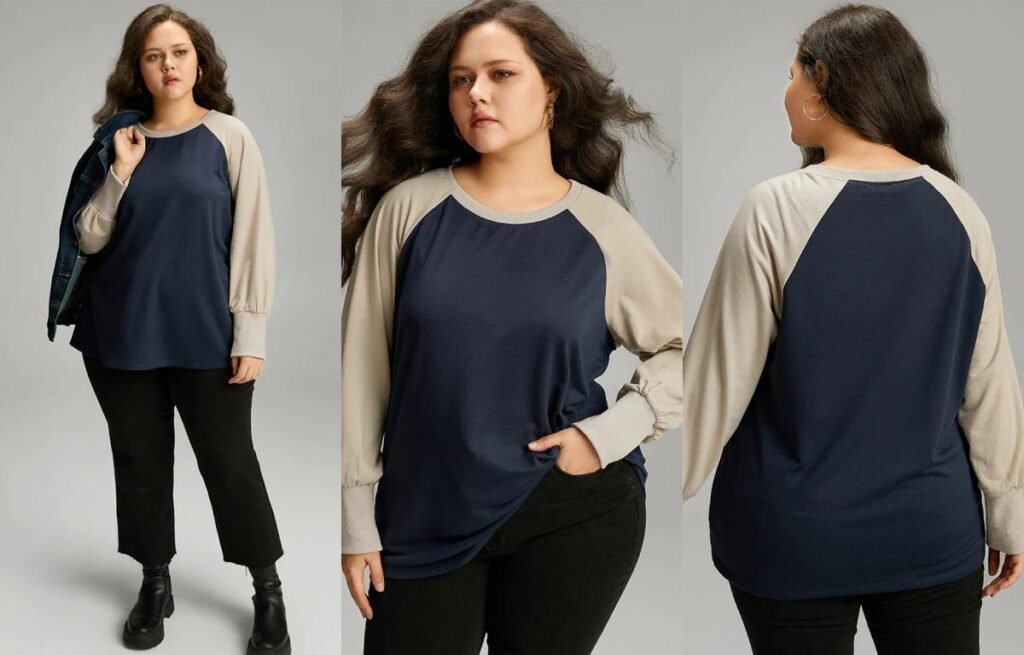
Why is the elastic cuff raglan sleeve both practical and stylish in women’s fashion?
It blends everyday comfort with sporty-chic appeal.
The elastic cuff raglan sleeve combines a classic raglan cut with a gathered, stretch-finished cuff. This sleeve design enhances ease of movement while adding a casual, relaxed finish at the wrist or forearm.
I once designed a fleece pullover with elastic cuff raglan sleeves—it became a bestseller thanks to its comfort and urban appeal.
How does the elastic cuff raglan sleeve differ from other cuffed sleeves?
The function and fit are what make it unique.
Unlike standard cuffs that use buttons or fixed seams, elastic cuffs stretch to fit snugly at the wrist, giving the sleeve a puffed or blouson shape. When paired with the diagonal seam of a raglan cut, the result is both flexible and fashion-forward.
This design is perfect for styles that need to balance movement with structure—like loungewear, activewear, or casual streetwear.
Comparison chart:
| Feature | Elastic Cuff Raglan | Regular Raglan | Button Cuffed Sleeve |
|---|---|---|---|
| Cuff Style | Elastic, gathered | Open or banded | Structured with buttons |
| Sleeve Movement | High flexibility | Moderate flexibility | Limited by cuff width |
| Visual Impact | Slight puff at wrist | Streamlined finish | Tailored and fitted |
What fabrics work best for elastic cuff raglan sleeve designs?
Balance stretch with shape retention.
Fabrics with slight stretch and medium weight—like cotton fleece, French terry, or ribbed jersey—work best. These materials gather well at the cuff without bunching or sagging. For more elevated looks, soft crepe or ponte knits also work.
In a recent sportswear order, we used brushed cotton with ribbed knit cuffs—the contrast texture made the piece both practical and stylish.
Recommended fabrics:
- Cotton fleece
- French terry
- Ribbed knit
- Ponte knit
- Soft crepe
What types of garments are best suited for this sleeve style?
Great for casualwear, activewear, and modern basics.
Elastic cuff raglan sleeves are ideal for sweatshirts, casual tops, sporty dresses, or utility-style jackets. They appeal to customers who value comfort and movement but still want a sharp, on-trend silhouette.
I often recommend this sleeve for fall/winter collections or loungewear capsules, especially when targeting buyers who lean into athleisure.
Best applications:
- Casual pullover tops
- Athleisure sweatshirts
- Street-style outerwear
- Relaxed-fit midi dresses
Batwing sleeve
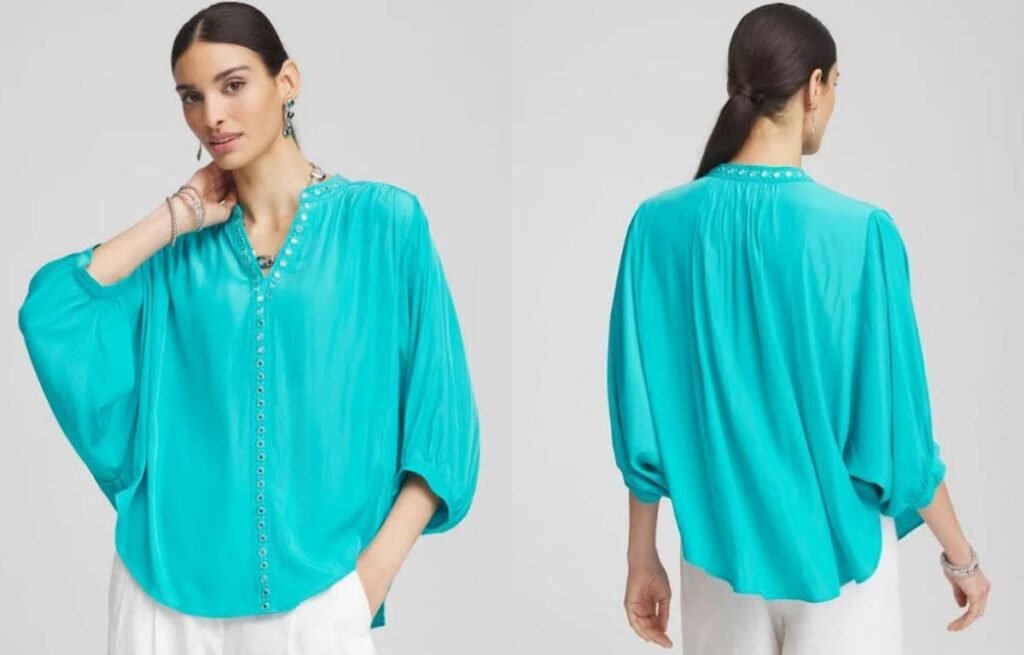
Why are batwing sleeves a bold and functional choice in women’s fashion?
They offer dramatic shape and unmatched comfort—without complex tailoring.
Batwing sleeves, also known as dolman sleeves, extend from the shoulder to the wrist in one continuous piece with a deep armhole and minimal underarm seam. This creates a wide, flowing silhouette that allows full range of motion.
I once designed a batwing knit top for a client’s winter capsule—the comfort and silhouette made it a standout best-seller.
How do batwing sleeves differ from other oversized or dropped sleeve designs?
The volume starts at the top—not just the armhole.
Unlike dropped shoulder or balloon sleeves, batwing sleeves have a very low armhole that blends almost into the bodice, often with no distinct seam at the underarm. This gives the upper body a cape-like or winged shape.
It’s a key feature in loose, modern garments that prioritize drape and movement over structure.
Comparison table:
| Feature | Batwing Sleeve | Dropped Shoulder Sleeve | Balloon Sleeve |
|---|---|---|---|
| Armhole placement | Very low, near waist | Slightly below shoulder | Regular, gathered at hem |
| Sleeve-body seam | Often no seam | Defined at armhole | Defined, often voluminous |
| Silhouette impact | Wide and flowing | Relaxed and straight | Round and puffy |
What fabrics best complement batwing sleeves?
Flow is essential—stiffness won’t work.
Soft, drapey fabrics like jersey, modal, bamboo knit, or lightweight wool help the batwing shape fall naturally and comfortably. Avoid stiff materials that restrict the wide movement or create unwanted bulk.
In one lookbook, I used viscose jersey for a batwing top—it flowed like liquid and looked flattering on different body shapes.
Recommended fabrics:
- Bamboo or viscose jersey
- Modal
- Lightweight wool
- Silk jersey
- French terry (for casualwear)
Which garments and buyers are best suited for batwing sleeve styles?
Perfect for modern comfort and fluid silhouettes.
Batwing sleeves work well in knit tops, oversized sweaters, loungewear, kaftans, and contemporary dresses. They’re ideal for buyers seeking inclusive fits, soft silhouettes, or elevated basics with a twist.
Especially popular with brands targeting comfort-conscious fashionistas or inclusive sizing collections.
Best applications:
- Lounge tops and sweatshirts
- Knit dresses with relaxed fits
- Layered outerwear tops
- Stylish maternity or plus-size garments
Korean wide Sleeve
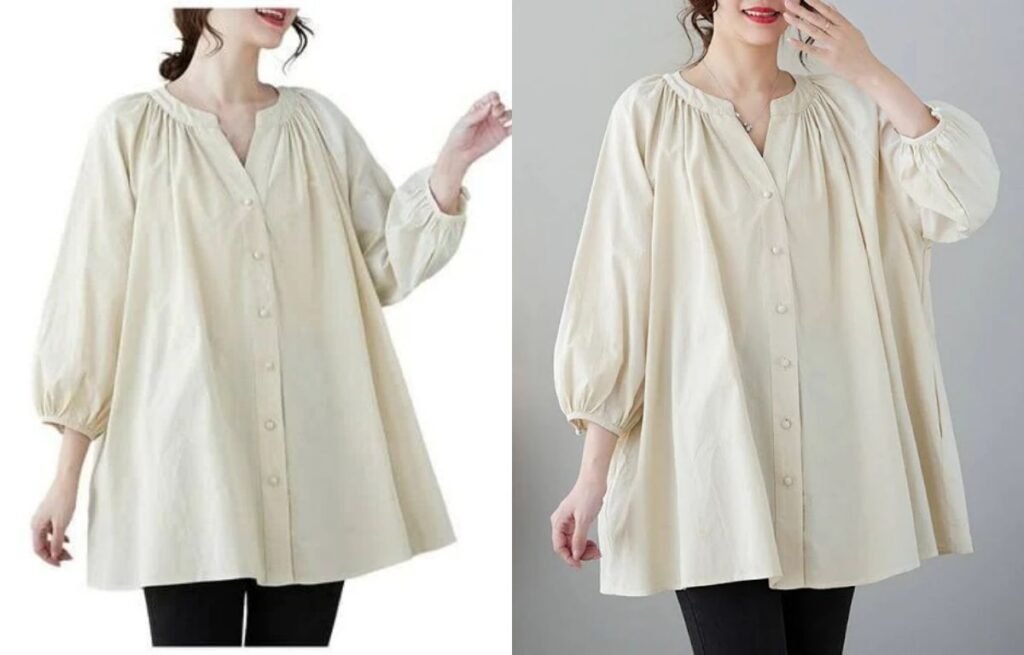
Why are Korean wide sleeves both graceful and functional in women’s fashion?
They blend cultural elegance with modern ease—without extra complexity.
Korean wide sleeves are inspired by traditional hanbok garments like the jeogori and wonsam. These sleeves are roomy and softly draped, offering graceful movement and a relaxed fit while paying homage to Korea’s rich sartorial heritage.
I once incorporated such wide sleeves into a modern blouse—it moved fluidly with every gesture and added cultural depth without feeling costume-like.
How are Korean wide sleeves distinct from other loose sleeve styles?
It’s the cultural intent and pattern origin that sets them apart.
Traditional Korean wide sleeves extend from the body with minimal tailoring, often cut as part of the main garment piece. This creates a seamless silhouette—not imposed flares, but naturally flowing lines rooted in tradition.
What fabrics best show off the soft flow of Korean wide sleeves?
Fabric choice elevates the visual and physical gesture.
Light to medium-weight fabrics like rayon, lightweight silk, soft linen, or Tencel blends allow wide sleeves to drape beautifully and move with elegance. These materials maintain the fluid silhouette core to traditional Korean aesthetics.
Suggested fabrics:
- Rayon or viscose
- Silk crepe
- Soft linen
- Tencel or bamboo blends
What garments work best with Korean wide sleeve designs?
They evoke refined comfort—perfect for modern elegance.
Korean wide sleeves suit blouses, kaftans, wrap tops, and relaxed dresses. They appeal to buyers seeking elevated simplicity—clean lines, comfortable wear, and subtly expressive design.
Best applications:
- Resort-style tops
- Kimono-inspired blouses
- Relaxed dresses with cultural flair
- Modern minimalist loungewear
Kimono sleeve
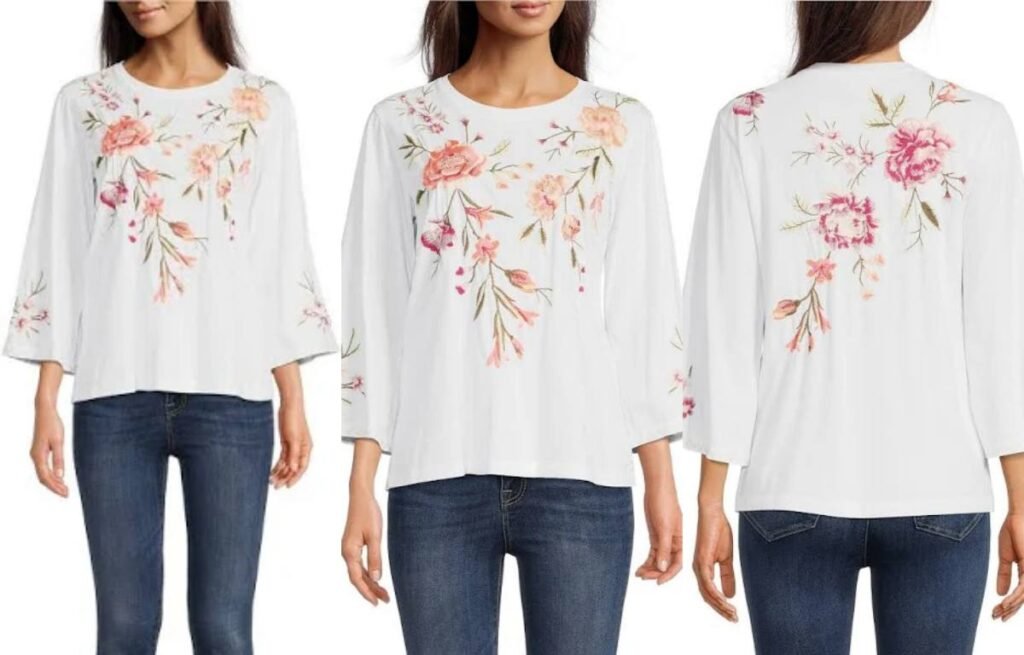
Why are kimono sleeves a timeless and graceful feature in women’s fashion design?
They add elegance through simplicity and flow—no tailoring complexity required.
Kimono sleeves are wide, straight sleeves that are cut as part of the bodice, without a separate armhole seam. Inspired by traditional Japanese kimono garments, they offer comfort, freedom of movement, and a minimalist aesthetic.
I once added kimono sleeves to a linen summer dress—it instantly looked more fluid and refined, perfect for resortwear.
How are kimono sleeves constructed differently from set-in or raglan sleeves?
It’s all in the continuous cut.
Kimono sleeves are part of the main body pattern and not set in separately. This creates a seamless transition from shoulder to sleeve with a straight or slightly curved line. There’s no armhole seam, which gives a relaxed drape and boxier fit.
This construction reduces production steps and adds visual simplicity—ideal for minimal, flowy pieces.
Sleeve construction comparison:
| Feature | Kimono Sleeve | Set-In Sleeve | Raglan Sleeve |
|---|---|---|---|
| Seam structure | Continuous with bodice | Separate sleeve piece | Sleeve joins at neckline |
| Fit | Relaxed and open | Shaped and structured | Natural and sporty |
| Movement | Free-flowing | Moderate | High flexibility |
What fabrics bring out the best in kimono sleeve designs?
The right fabric makes or breaks the drape.
Light to medium-weight fabrics with a soft hand and good drape work best for kimono sleeves. Think rayon, silk blends, crepe, or lightweight linen. These fabrics flow naturally without stiff edges.
In one client’s collection, I used rayon twill for a kimono-sleeve blouse—it moved beautifully and worked across sizes effortlessly.
Recommended fabrics:
- Rayon or viscose
- Silk crepe
- Soft linen
- Bamboo jersey
- Tencel blends
What garments and customer profiles are best suited for kimono sleeves?
They fit relaxed, elegant, and inclusive fashion styles.
Kimono sleeves are ideal for blouses, wrap dresses, kaftans, resortwear, and modern loungewear. They appeal to buyers who prioritize comfort, versatility, and soft, elegant silhouettes.
For fashion buyers targeting warm-weather or travel collections, this sleeve is both functional and refined.
Best applications:
- Resort kaftans
- Kimono-style wrap tops
- Loose-fit summer dresses
- Minimalist lounge sets
Diagonal Raglan Sleeve
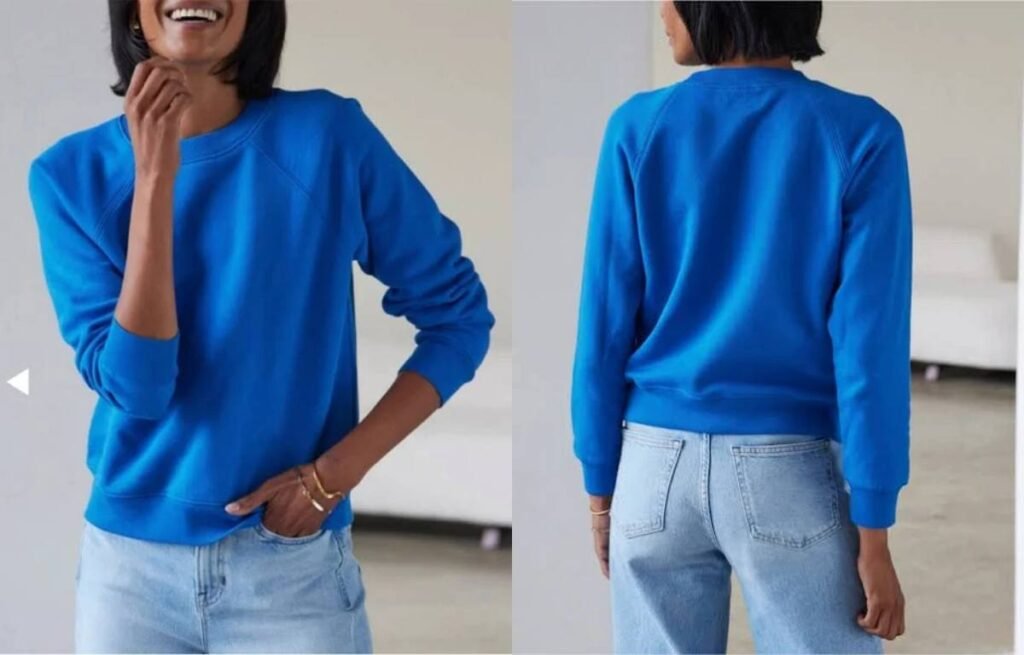
What’s the key difference between diagonal raglan and classic raglan sleeves?
At first glance, they look similar—but the cut tells a different story.
Diagonal raglan sleeves feature a more angular, slanted seam line that cuts across the upper chest more sharply than a traditional raglan. This small shift makes the style look cleaner and slightly more tailored.
I once worked on a design for a client looking for an athletic-inspired but fashion-forward sweatshirt. The diagonal raglan gave her the visual edge she needed without going full streetwear.
Comparison chart:
| Feature | Diagonal Raglan | Classic Raglan |
|---|---|---|
| Seam direction | Sharper, more angled line | Softer, rounded seam |
| Silhouette impact | Slightly structured | More relaxed |
| Design impression | Sporty but modern | Casual and soft |
| Best for | Sleek sweatshirts, outerwear | Loungewear, t-shirts |
What fabric types work best for diagonal raglan sleeve styles?
Fabric choice helps define the sleeve’s sharper look.
Mid-weight knits, ponte, and neoprene fabrics highlight the structured seam of diagonal raglan sleeves. For outerwear, twill or compact wool helps the shape hold up over time.
Whenever I source for this style, I avoid overly drapey or loose fabrics—they hide the diagonal line. A clean finish is key to showing off this detail.
Recommended fabrics:
- Tops & sweatshirts: Ponte, scuba, medium-weight jersey
- Outerwear: Wool blends, canvas, twill
- Athleisure looks: Technical knits, double-knit fabrics
Is the diagonal raglan sleeve versatile across different garment types?
Yes—but it depends on the silhouette you want to build.
Diagonal raglan sleeves are versatile, but they work best on pieces that benefit from a little structure, like slim-fit tops, jackets, or dresses with clean lines.
For oversized fits, I usually stick to classic raglan. But for pieces where structure matters—especially for Gen Z-inspired activewear or high-street fashion—it’s a strong design choice.
Best applications:
- Fitted sweatshirts
- Bomber jackets
- Minimalist dresses
- Structured knitwear
Curved Raglan Sleeve
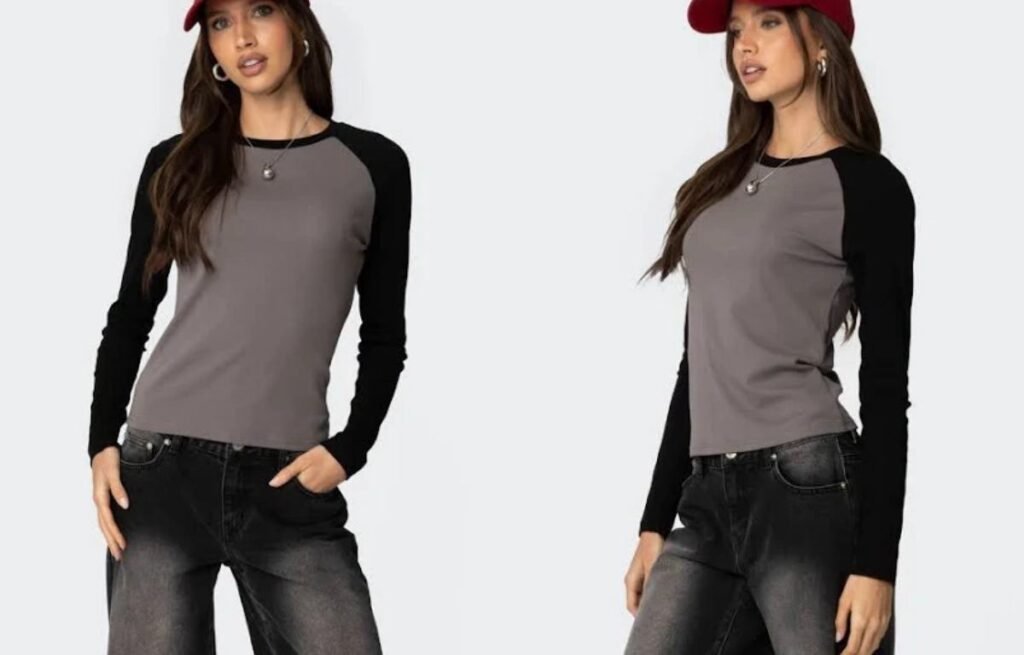
How is the curved raglan sleeve pattern constructed differently?
The cut of the sleeve can change the entire vibe and fit.
Curved raglan sleeves feature a gently arched seam that flows from the neckline to the underarm, closely following the body’s shoulder contour. Unlike straight raglans, this curved line enhances the shape of the upper body.
Compared to classic raglan sleeves, the curved version flatters a wider range of shoulder types and works especially well for bodies with less defined shoulder lines.
Construction comparison:
| Feature | Curved Raglan Sleeve | Classic Raglan Sleeve |
|---|---|---|
| Seam shape | Curved, hugs the shoulder | Straight, diagonal from neck |
| Visual effect | Soft, elegant | Sporty, clean |
| Fit impression | Feminine and refined | Relaxed and casual |
| Ideal usage | Knit tops, fashion blouses | Sweatshirts, activewear |
What fabrics work best with curved raglan sleeve designs?
Fabric choice determines how well the curved line shows.
Soft, stretchy knits like cotton-spandex blends, wool knits, or slub cotton are perfect for curved raglan sleeves. These fabrics mold to the body and highlight the curved seam.
I always advise against using stiff materials for this sleeve type, as they can hide or distort the smooth line.
Suggested fabrics:
- For knitwear and pullovers: Cotton-spandex, wool blends, slub cotton
- For relaxed fashion tops: Rayon, modal, lightweight double-knit
- For light outerwear: Medium-weight knits, light wool
What garment styles work best with curved raglan sleeves?
Looking for a gentle and cozy silhouette? This sleeve fits right in.
Curved raglan sleeves are ideal for feminine, minimal-style tops—especially fitted knits, simple pullovers, or soft-line dresses. They naturally shape the shoulder and add subtle dimension to the upper body.
I once created a loose-fit wool sweater using this sleeve cut, and it turned out to be both structured and cozy—perfect for a 25–35-year-old female audience.
Best applications:
- Slim-fit wool tops
- Pullover knitwear
- Feminine-style blouses
- Minimalist dresses
Contrast Raglan Sleeve
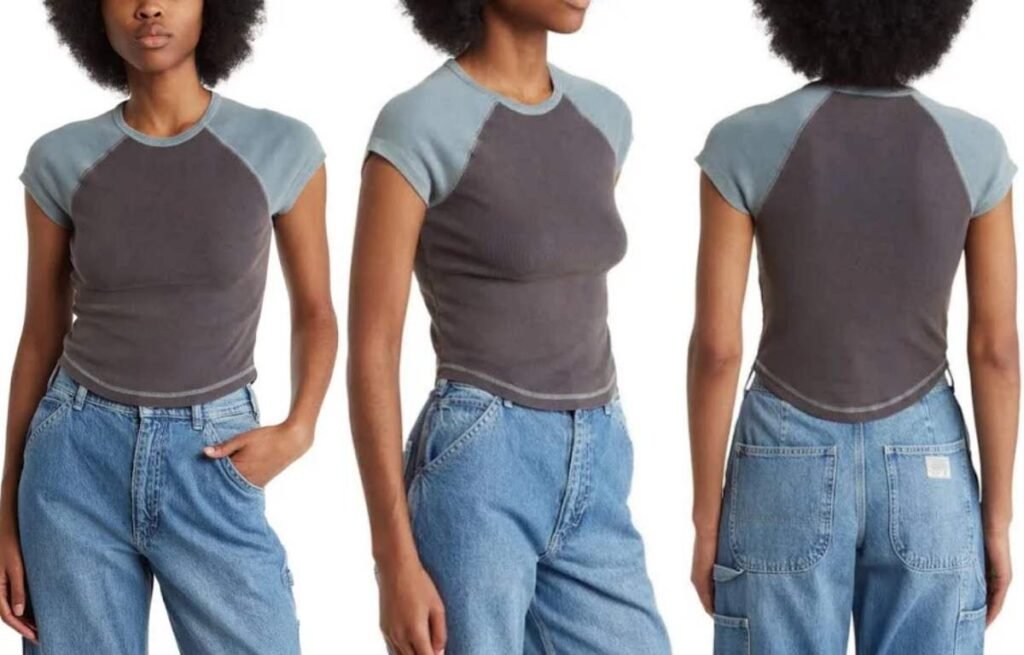
What makes the contrast raglan sleeve visually unique?
The beauty is in the contrast—literally.
Unlike traditional raglan sleeves, the contrast version highlights the sleeve cut by using different colors, textures, or prints. This simple technique instantly adds energy, personality, and sporty appeal to everyday garments.
It’s often used in baseball tees, retro-inspired jackets, and Y2K-inspired streetwear. But with the right color combo, it also works in upscale casual collections.
Common contrast options:
- Color-block: e.g., white body with navy sleeves
- Fabric contrast: cotton body with leather sleeves
- Print mix: plain body with floral or striped sleeves
What fabrics and color combinations work best for contrast raglan sleeves?
Smart pairing is key to making the design pop.
High-contrast fabrics like jersey and fleece in different tones, or unexpected mixes like cotton and faux leather, work well for visual separation. Color combos should reflect the brand identity—bold for Gen Z, subtle for premium collections.
For one of my Australian clients, we created a series using soft pastel bodies with saturated sleeve tones. The look felt playful yet elevated.
Suggested combinations:
| Sleeve Fabric | Body Fabric | Color Idea | Style Note |
|---|---|---|---|
| Cotton Jersey | Jersey Knit | White + Black | Classic & sporty |
| Faux Leather | Cotton Fleece | Black + Olive Green | Urban streetwear vibe |
| Ribbed Knit | French Terry | Lavender + Cream | Soft, trendy, Gen Z friendly |
Which garments benefit most from contrast raglan sleeve designs?
This design suits more than just casualwear.
Contrast raglan sleeves are perfect for sweatshirts, bomber jackets, casual tops, and even fitted dresses. They add structure and personality without needing complex cuts or prints.
I usually recommend them for capsule collections or limited-edition drops—they look bold and sell fast, especially with Gen Z and Millennial buyers.
Top applications:
- Color-block sweater dresses
- Elastic Cuff Raglan Sleeve
- Baseball tees
- Cropped sweatshirts
- Two-tone jackets
Wide Shoulder Raglan Sleeve
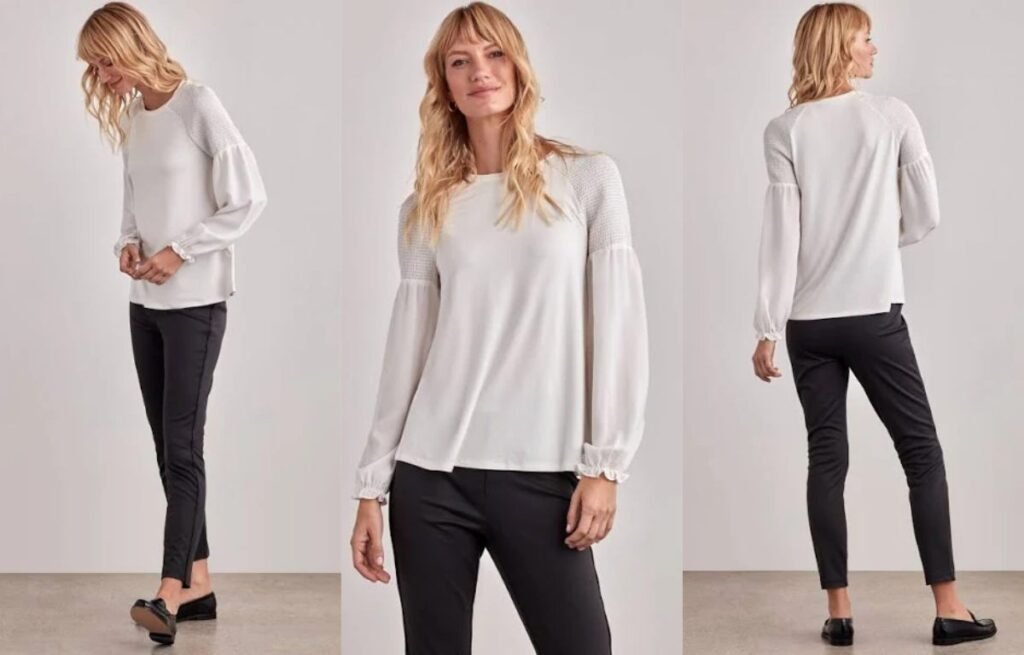
How is the wide shoulder raglan different from regular raglan sleeves?
The difference is all in the proportion.
While classic raglan sleeves follow a natural shoulder slope, the wide shoulder raglan expands that curve, sometimes extending beyond the natural shoulder line. This creates a bolder, roomier look ideal for layering or dramatic styles.
It’s commonly used in oversized or fashion-forward garments and pairs well with structured fabrics that hold the sleeve’s shape.
Construction comparison:
| Feature | Wide Shoulder Raglan | Regular Raglan |
|---|---|---|
| Shoulder fit | Extended, oversized | Natural shoulder curve |
| Visual effect | Stronger, boxy shape | Relaxed, flowing look |
| Best for | Outerwear, trend pieces | Basics, sportswear |
| Fabric compatibility | Structured or heavy | Soft or flexible fabrics |
What fabrics are best for the wide shoulder raglan design?
Structure matters more than softness here.
Medium to heavyweight fabrics like wool blends, denim, and canvas are perfect for keeping the exaggerated sleeve shape. Lighter fabrics may collapse at the shoulder and lose the defined outline.
In one oversized trench project, we used heavy twill with contrast stitching along the raglan seam—the shoulder volume looked intentional and chic.
Recommended fabrics:
- Wool coating fabric
- Structured denim
- Twill or canvas
- Bonded jersey (for modern streetwear)
What styles work well with wide shoulder raglan sleeves?
Think bold silhouettes and cool layering.
Wide shoulder raglan sleeves work best in statement outerwear like oversized coats, bombers, or dramatic jackets. They’re also seen in boxy sweatshirts and contemporary dresses designed for a strong upper-body line.
For collections targeting confident, fashion-driven buyers, this sleeve is a great way to create shape and impact without complex tailoring.
Key applications:
- Sharp-shouldered knit dresses
- Batwing Sleeve
- Oversized wool coats
- Boxy cropped bombers
- Minimalist sweatshirts with volume
Butterfly Sleeve
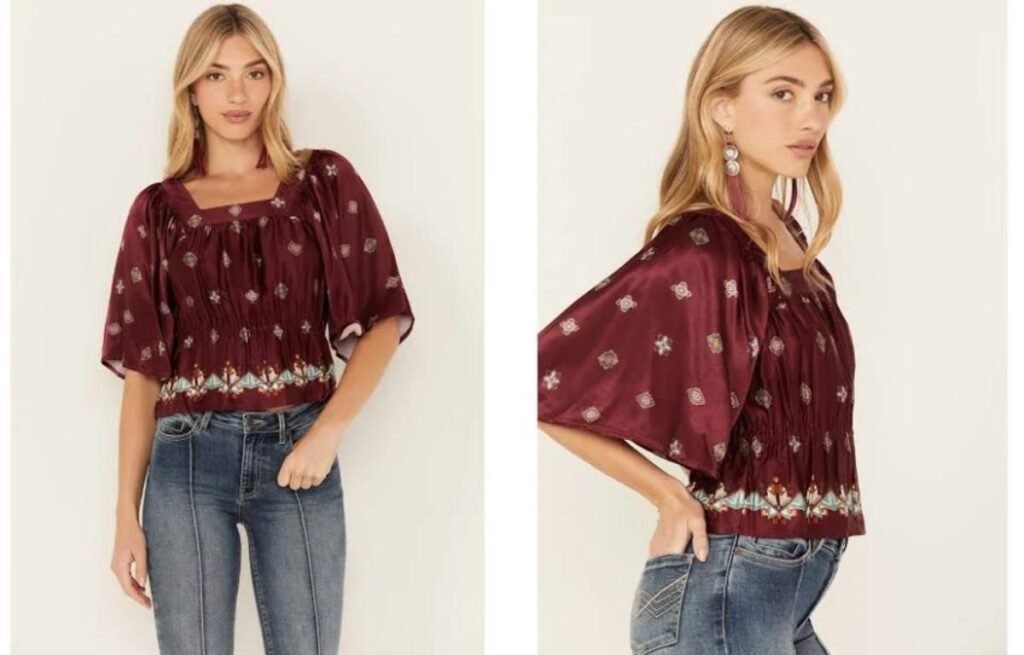
What makes butterfly sleeves different from flared or angel sleeves?
They look similar at first—but their structure and movement tell them apart.
Butterfly sleeves are shorter and wider than angel sleeves, with a gentle drape that flutters when you move. They typically end above the elbow, giving a wing-like effect without overwhelming the silhouette.
This sleeve is ideal for warmer seasons, as it provides airiness and a soft frame for the arms.
Style comparison:
| Feature | Butterfly Sleeve | Angel Sleeve | Flared Sleeve |
|---|---|---|---|
| Length | Short (above elbow) | Long (below elbow) | Varies |
| Shape | Wide, wing-like | Flowing and graceful | Flares out from elbow |
| Best use | Blouses, summer dresses | Boho gowns, maxi dresses | Statement tops |
What fabrics best showcase butterfly sleeves?
Fabric weight and drape are key to achieving that airy look.
Lightweight, flowing materials like chiffon, georgette, silk, or rayon work best for butterfly sleeves. These fabrics catch air and movement, creating a fluttering effect that defines the silhouette.
I always avoid stiff fabrics for this sleeve—it defeats the purpose of its elegance and softness.
Fabric suggestions:
- Chiffon
- Silk blends
- Viscose or rayon
- Lightweight crepe
What garments and body types are best suited for butterfly sleeves?
This sleeve flatters without clinging—perfect for romantic silhouettes.
Butterfly sleeves are great for blouses, dresses, and tops aimed at spring and summer collections. They soften broader shoulders and create balance for pear-shaped figures.
One of my clients targets young women who prefer modest but stylish designs—this sleeve offers both coverage and charm without looking heavy.
Best applications:
- Romantic tops with volume
- Kimono Sleeve
- Summer blouses
- Casual dresses
- Resortwear and holiday pieces
Cape Sleeve
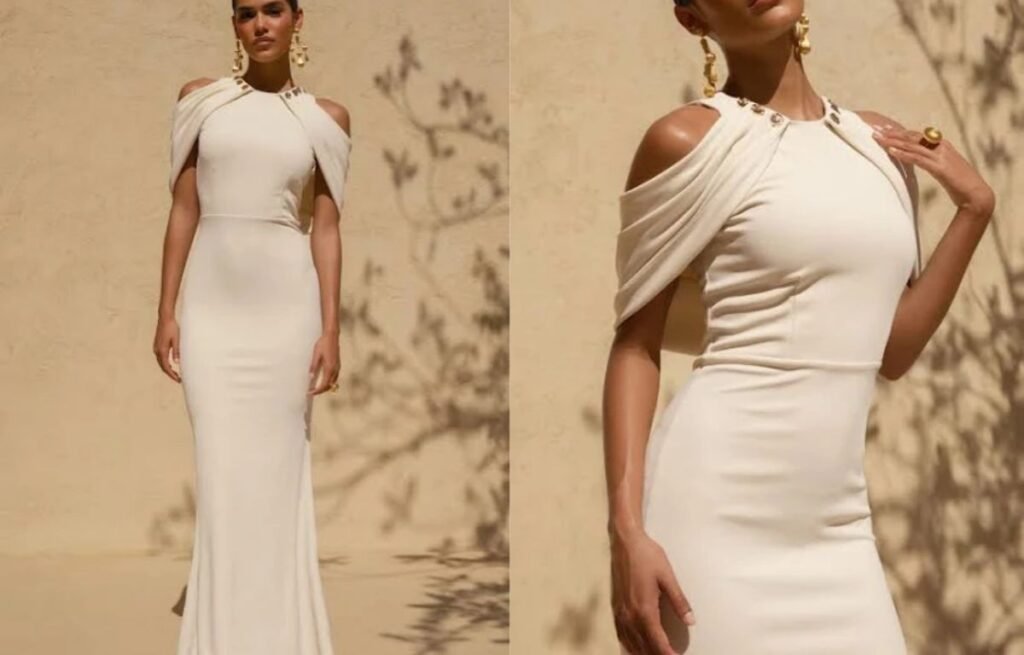
Why are cape sleeves a dramatic yet elegant choice in women’s fashion?
Cape sleeves instantly turn a simple outfit into a statement piece.
Cape sleeves are designed like a draped panel flowing over the shoulders and arms, resembling a cape. They don’t have a fitted armhole like regular sleeves, which creates an open, fluid silhouette full of movement and grace.
I used cape sleeves in an eveningwear project—they added drama without compromising comfort or wearability.
How do cape sleeves differ from other wide or draped sleeve styles?
They’re not just loose—they’re layered.
Unlike bell or flutter sleeves, cape sleeves are not stitched closed along the underarm. They often start at the shoulder or neckline and hang loosely over the arms, giving the illusion of a cape layered over the body.
This design adds dimension and formality, which makes it ideal for occasion wear and bold looks.
Comparison breakdown:
| Feature | Cape Sleeve | Bell Sleeve | Butterfly Sleeve |
|---|---|---|---|
| Construction | Open, layered panel | Fitted then flared | Short, flared, lightweight |
| Attachment | From shoulder or neckline | From armhole | From shoulder |
| Coverage | Full upper arm coverage | Partial lower sleeve | Partial upper arm |
What fabrics bring out the best in cape sleeves?
The right fabric ensures both flow and shape.
Lightweight, fluid fabrics like chiffon, organza, georgette, or crepe are ideal for cape sleeves. For structured versions, satin or bonded silk adds a more defined drape.
One of my best designs used double-layered georgette—the upper cape flowed with the body, while the under layer added richness.
Recommended fabrics:
- Chiffon or georgette
- Satin or duchess silk
- Soft crepe
- Tulle (for sheer layering)
Ideal applications:
- Bridal and bridesmaid dresses
- Evening gowns
- Statement cocktail dresses
- Resort kaftans
Accordion Sleeve
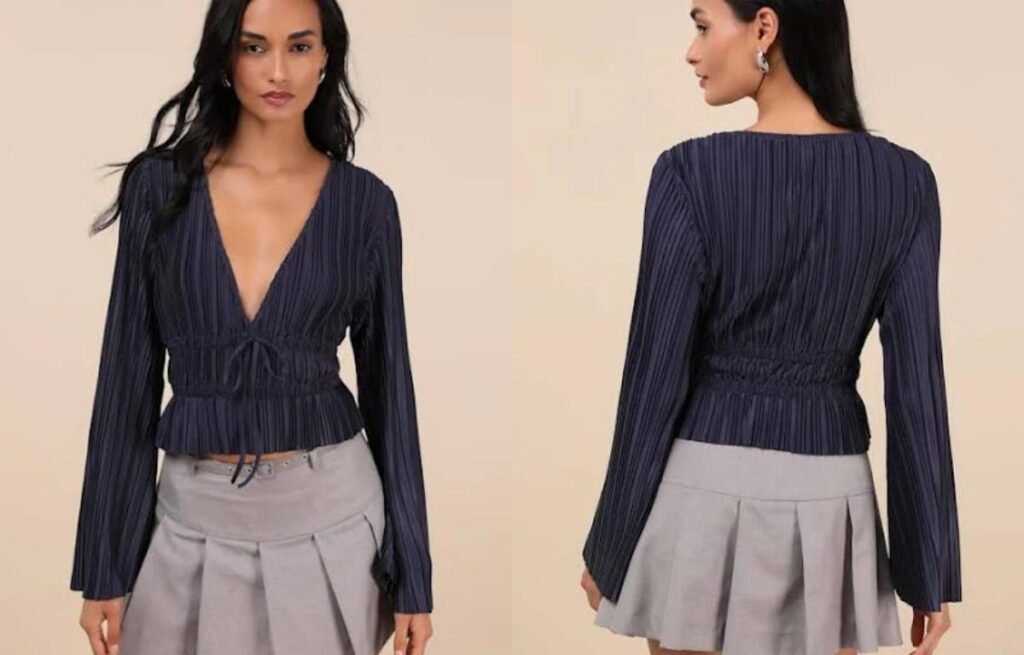
Why are accordion sleeves gaining attention in women’s fashion design?
They bring rhythm and texture—without overwhelming the silhouette.
Accordion sleeves are defined by their narrow, evenly spaced pleats that create a rippled effect along the sleeve. This design adds subtle movement, depth, and elegance while remaining lightweight and modern.
I once introduced accordion sleeves in a pleated satin blouse for a client—it instantly stood out, offering both minimalism and sophistication.
What defines an accordion sleeve and how is it constructed?
It’s all about the pleats—precise and continuous.
Accordion sleeves feature fine, vertical pleats that run the full length of the sleeve. Unlike puff or gathered sleeves, these pleats are structured and evenly spaced, usually heat-set to maintain shape over time.
This sleeve gives garments a refined architectural feel, often used in formal or contemporary minimalist designs.
Sleeve structure comparison:
| Feature | Accordion Sleeve | Puff Sleeve | Pleated Sleeve |
|---|---|---|---|
| Pleating style | Fine, consistent pleats | Gathered, voluminous | Larger, looser pleats |
| Texture | Crisp and structured | Soft and round | Moderate texture |
| Movement | Light and fluttery | Bouncy and soft | Flowy but not stiff |
Which fabrics work best for accordion sleeves?
Some materials pleat better—and last longer.
Lightweight synthetic fabrics like polyester chiffon, satin, and organza are ideal for accordion sleeves. These fabrics hold heat-set pleats well and resist collapsing over time. Natural fibers like silk may require more maintenance.
In one of my designs, I used pleated organza with a soft shimmer—it created a luxe finish without adding bulk.
Recommended fabrics:
- Polyester chiffon
- Satin crepe
- Organza
- Lightweight tulle
What types of garments benefit most from accordion sleeves?
Perfect for modern elegance and editorial details.
Accordion sleeves suit blouses, evening tops, cocktail dresses, and statement outerwear. They work especially well in clean silhouettes where the sleeve detail becomes the focus.
They appeal to fashion buyers seeking texture without extra layers—great for collections aimed at minimalism with a twist.
Best uses:
- Pleated satin blouses
- Eveningwear tops
- Layered tunics
- Editorial-style dresses
Puff Sleeve
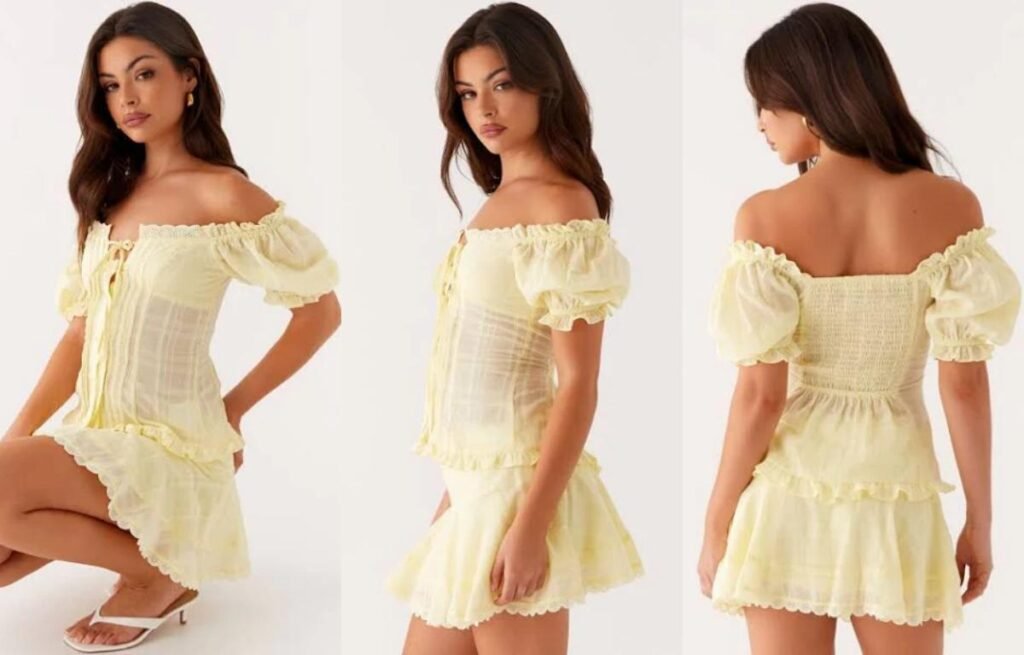
Why are puff sleeves a staple detail in women’s fashion design?
They create instant volume, charm, and a strong visual identity.
Puff sleeves are gathered at the shoulder and/or hem to form a voluminous, rounded shape. This playful silhouette adds femininity, drama, or vintage appeal depending on its size and fabric.
I once added puff sleeves to a cropped cotton top—it turned a basic silhouette into a best-seller for my Australian client’s summer line.
How do puff sleeves differ across various styles and eras?
One sleeve, endless variations.
Puff sleeves come in many forms—short and cute, long and dramatic, or subtle with slight volume. The gathering technique stays the same, but placement and size change the overall impact.
They’ve appeared in everything from 1800s romantic gowns to 1980s power looks and now Gen Z trend pieces.
Common puff sleeve variations:
- Short puff: Rounded and girly, ends above elbow
- Long puff: Volume at shoulder and wrist
- Layered puff: Multiple tiers or panels
- Dropped puff: Gathers placed lower for a relaxed feel
What fabrics work best for creating puff sleeves?
The right fabric gives the puff structure—or softness.
Crisp materials like poplin, taffeta, and organza hold volume well. Softer fabrics like rayon or voile give a more subtle puff. The key is balancing stiffness and comfort.
In a recent project, we used organza over cotton for a double-layer puff sleeve—it looked light but held its shape all day.
Best fabric choices:
| Sleeve Type | Recommended Fabric |
|---|---|
| Structured puff | Poplin, taffeta, organza |
| Soft puff | Rayon, voile, light cotton |
| Formal puff | Silk organza, satin, brocade |
| Casual puff | Cotton blends, linen |
What types of garments benefit from puff sleeves?
They work across categories—casual to couture.
Puff sleeves are ideal for blouses, dresses, tops, and even outerwear when used right. They add shape to the shoulder and are great for balancing out pear-shaped or narrow shoulders.
For fashion-forward brands targeting Gen Z or modern romantic aesthetics, puff sleeves offer high visual appeal with simple construction.
Popular applications:
- Summer crop tops
- Puff-sleeve blouses
- Cottagecore or romantic dresses
- Editorial-style jackets
Double Puff Sleeve
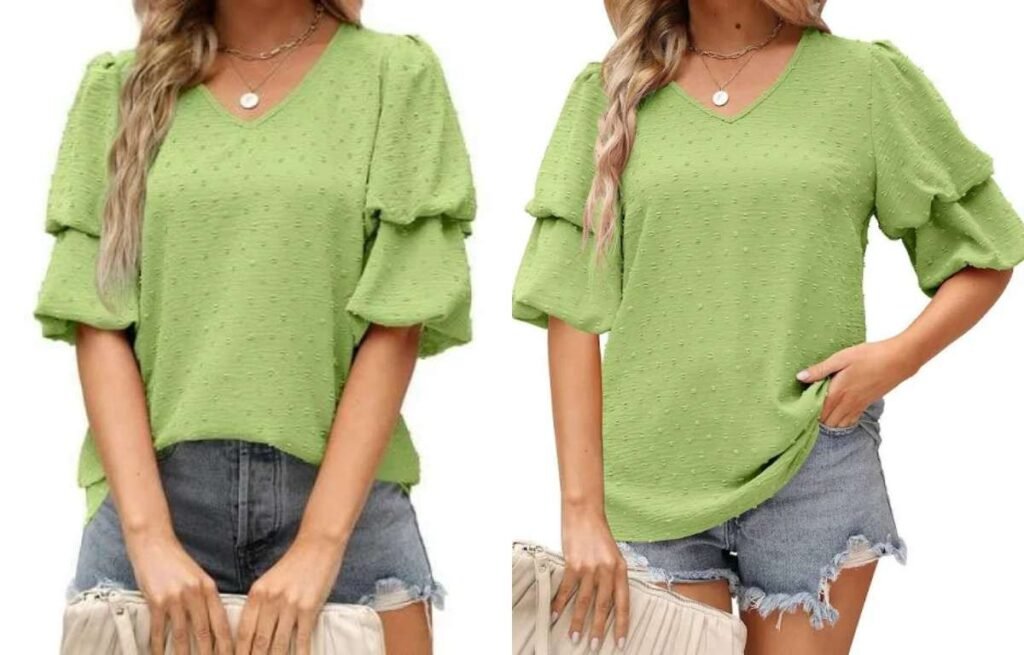
Why are double puff sleeves a dramatic trend in women’s fashion design?
One puff sleeve makes a statement—two create a showstopper.
Double puff sleeves layer volume on volume, using two gathered sections to amplify the silhouette. They offer exaggerated femininity and boldness, perfect for statement tops, dresses, and runway-inspired styles.
I used this sleeve for a party dress line—it gave an instant high-fashion feel, and the design became a top-seller for photo-driven eCommerce.
What exactly is a double puff sleeve, and how is it constructed?
It’s volume built in two tiers—both eye-catching and architectural.
Double puff sleeves are designed with two gathered sections: one near the shoulder and another midway down the sleeve or near the cuff. This creates a dramatic ballooned effect while maintaining a balanced, fashionable shape.
They require structured gathering at both points, and careful sleeve shaping to keep the volume controlled rather than messy.
Construction comparison:
| Feature | Double Puff Sleeve | Classic Puff Sleeve | Bishop Sleeve |
|---|---|---|---|
| Volume points | Two (upper and lower) | One (usually shoulder) | Tapered at the cuff |
| Silhouette | Exaggerated and bold | Feminine and soft | Flowing and romantic |
| Ideal for | Statement pieces | Everyday fashion | Boho and dressy looks |
What fabrics are ideal for double puff sleeves?
Structure is key to holding the shape.
Medium-weight woven fabrics like poplin, taffeta, organza, and crisp cotton blends work best. These materials maintain puff volume without collapsing, and highlight the tiered silhouette effectively.
I once used structured organza for a limited-edition blouse—the sleeves held their shape perfectly, even after long wear.
Suggested fabrics:
- Taffeta
- Poplin
- Organza
- Structured cotton
What garments benefit most from double puff sleeve design?
These sleeves are made for standout pieces.
Double puff sleeves work well in statement tops, occasion dresses, editorial looks, and bold fashion collections. They’re ideal when you want volume and drama without heavy layering.
Fashion buyers who need attention-grabbing styles for social media or trend-forward drops often request this sleeve style.
Top applications:
- Cropped party tops
- Runway-style dresses
- Bold blouses for Gen Z markets
- Puff-sleeve outerwear
Princess Sleeve
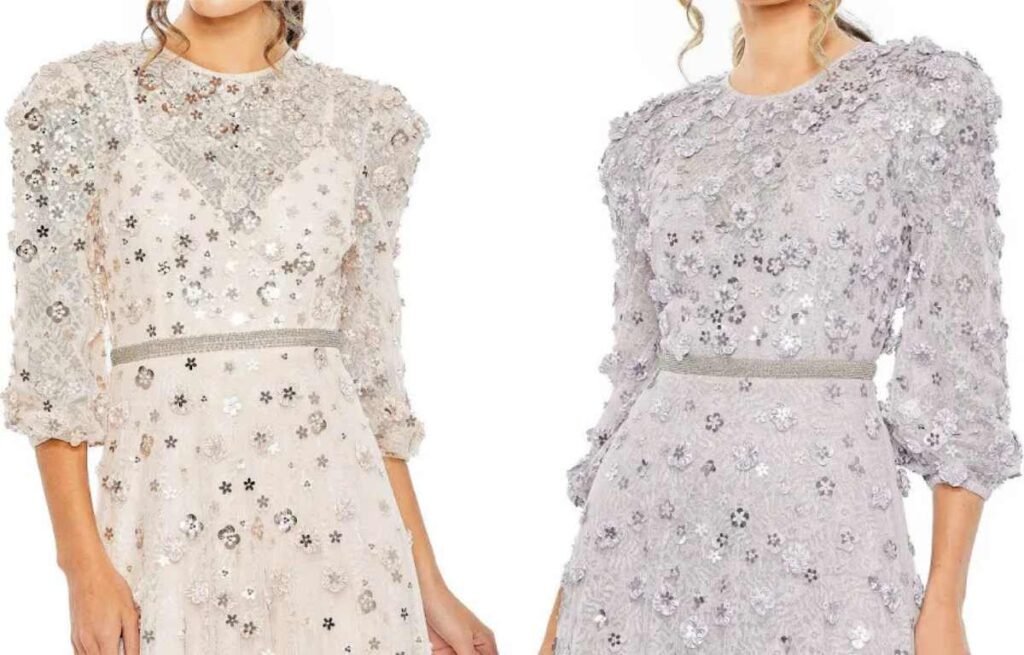
What makes princess sleeves a romantic staple in women’s fashion design?
It’s the sleeve that feels royal—without going over the top.
Princess sleeves are full, gathered sleeves that start with volume at the shoulder and taper down toward the wrist or elbow. They give a soft, feminine shape that recalls vintage and romantic aesthetics while staying wearable and elegant.
I designed a spring dress with subtle princess sleeves—it instantly gave the piece a dreamy, elevated feel.
How are princess sleeves different from puff or bishop sleeves?
The shape tells the story—it’s more tapered and refined.
Unlike puff sleeves that stay round and short, or bishop sleeves that balloon at the wrist, princess sleeves start with gathered fullness at the top and gradually slim down. They offer both structure and softness in one design.
This makes them perfect for dresses and tops where you want volume but not too much drama.
Sleeve shape comparison:
| Feature | Princess Sleeve | Puff Sleeve | Bishop Sleeve |
|---|---|---|---|
| Volume location | At shoulder, tapers down | At shoulder, short and round | Full length, gathers at wrist |
| Silhouette | Slim with upper fullness | Compact, round silhouette | Billowy with a cuff |
| Overall feel | Romantic and graceful | Playful and bold | Flowing and soft |
Which fabrics best highlight princess sleeve designs?
Volume needs lightness—but structure matters too.
Princess sleeves work best with lightweight to midweight fabrics that can hold gathers without stiffness. Cotton voile, chiffon, organza, or taffeta all shape well while maintaining a soft drape.
In one design, I used crisp taffeta for a more structured look—it held the sleeve shape beautifully without feeling bulky.
Ideal fabric options:
- Cotton voile
- Organza
- Chiffon
- Taffeta
- Soft linen blends
What garments and audiences are most suited for princess sleeves?
Think feminine, trend-aware, and detail-focused.
They work well in collections that balance romantic aesthetics with modern styling—perfect for boutiques targeting Gen Z and Millennial shoppers.
Princess sleeves are popular in blouses, romantic dresses, and feminine tops. They’re perfect for younger markets—especially buyers who love vintage references, soft silhouettes, and statement sleeves that still feel wearable.
Recommended applications:
- Empire waist dresses
- Cottagecore-style blouses
- Bridal or bridesmaid wear
- Romantic spring/summer tops
Bishop Sleeve
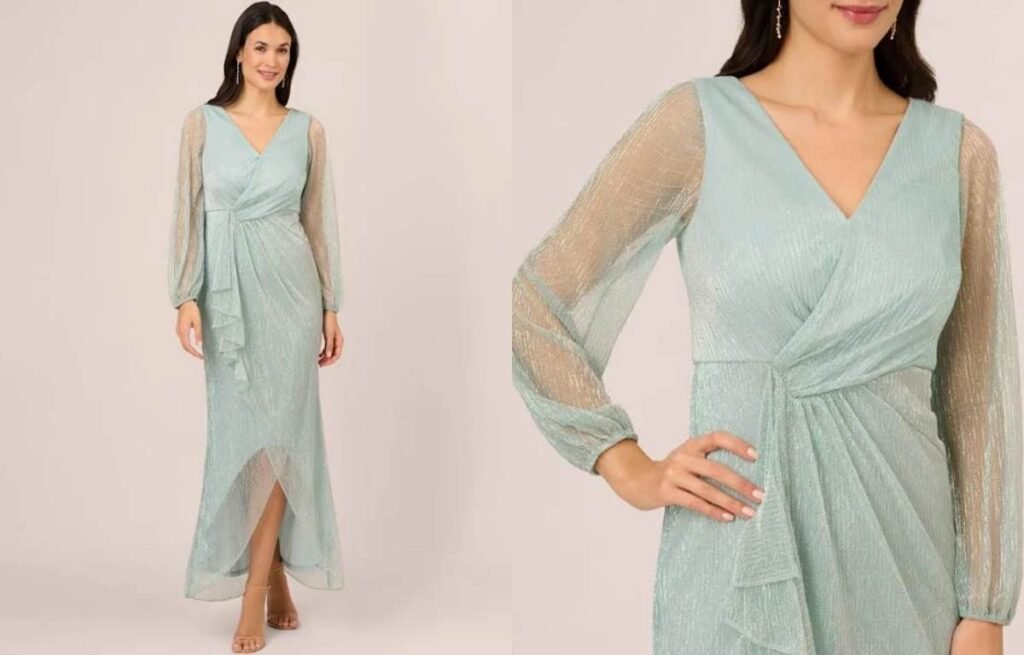
Why are bishop sleeves a classic favorite in women’s fashion design?
They bring soft drama—without overpowering the silhouette.
Bishop sleeves are long, full sleeves gathered into a cuff at the wrist, creating a billowy, elegant shape. They add volume and movement while keeping the wrist fitted and refined, making them timeless and versatile.
I once used bishop sleeves in a boho-style chiffon dress—it felt romantic, fluid, and sold well across multiple markets.
What makes bishop sleeves different from other voluminous sleeves?
It’s about balance between fullness and control.
Unlike bell or balloon sleeves, bishop sleeves are gathered at the wrist with a snug cuff. This contrast creates a graceful silhouette that allows the upper sleeve to flow while keeping the overall shape polished and wearable.
They’re ideal for both romantic and minimalist designs, depending on fabric and styling.
Comparison table:
| Feature | Bishop Sleeve | Bell Sleeve | Balloon Sleeve |
|---|---|---|---|
| Shape | Full, tapered at cuff | Flared from elbow | Rounded and puffy |
| Cuff design | Fitted, often with buttons | No cuff | Often gathered with elastic |
| Look & feel | Elegant, romantic | Free-spirited | Playful, youthful |
What fabrics work best for bishop sleeves?
The fabric sets the tone—soft or statement.
Light to medium-weight fabrics like chiffon, crepe, voile, and satin are ideal for bishop sleeves. These allow for drape and fullness without stiffness. For structured versions, light poplin or silk faille can be used.
I prefer using soft fabrics that hold volume gently—they let the sleeve move beautifully without looking bulky.
Suggested fabrics:
- Chiffon
- Georgette
- Soft satin
- Lightweight crepe
- Cotton voile (for casual looks)
Best applications:
- Bohemian maxi dresses
- Office blouses
- Resortwear tops
- Formal gowns with soft volume
Balloon Sleeve
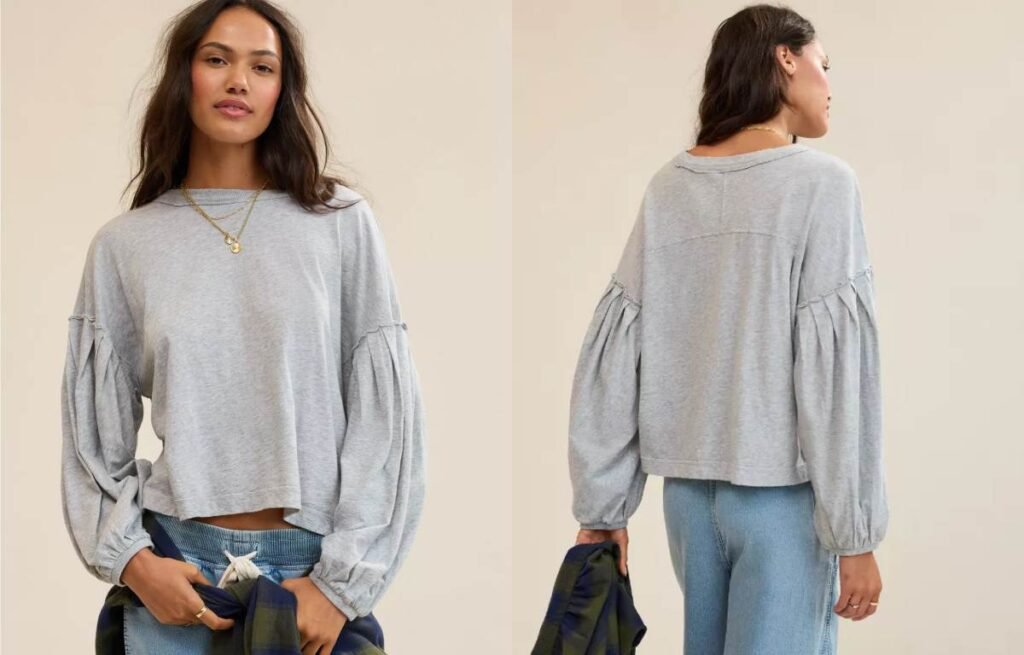
Why are balloon sleeves a go-to choice for creating volume in women’s fashion?
They make a statement—without sacrificing comfort or wearability.
Balloon sleeves are voluminous sleeves that puff out, usually between the shoulder and wrist, then gather back at the cuff or hem. They add drama, texture, and a modern silhouette while remaining feminine and wearable.
In one of my Fall drops, a balloon-sleeved blouse became the star piece—it drew eyes immediately on display, even without bold prints.
What defines a balloon sleeve compared to other puffed styles?
It’s all about controlled volume and balance.
Balloon sleeves feature a full, rounded shape that expands mid-sleeve and gathers at the end. Unlike bishop sleeves that taper loosely, balloon sleeves usually cinch tightly at the wrist or elbow, forming a bubble-like contour.
They can be subtle or extreme depending on fabric, fullness, and styling choices.
Sleeve comparison:
| Feature | Balloon Sleeve | Bishop Sleeve | Puff Sleeve |
|---|---|---|---|
| Volume placement | Full mid-arm volume | Gradual fullness | Mostly at shoulder |
| Cuff treatment | Tightly gathered or cuffed | Loosely gathered | Often short or mid-length |
| Style impact | Bold and modern | Soft and flowing | Cute and youthful |
What fabrics work best for creating structured balloon sleeves?
Fabric weight determines how big the balloon goes.
Stiff or mid-weight fabrics like poplin, taffeta, organza, or crisp cottons hold the balloon shape well. For softer looks, medium-weight knits or woven blends can still create volume without looking too rigid.
In one street-style collection, I used nylon taffeta for extra bounce—the sleeves held their shape all day during shoots and showroom previews.
Recommended fabrics:
- Cotton poplin
- Nylon taffeta
- Crisp linen blends
- Organza or voile
What garments and audiences are best suited for balloon sleeve designs?
Bold detail, wide appeal—especially for trend-driven buyers.
Balloon sleeves work across blouses, dresses, jackets, and knitwear. They’re loved by younger fashion audiences, especially Gen Z and Millennials looking for volume, vintage flair, or editorial drama.
For fast-fashion buyers like Emily Clarke, balloon sleeves create trend appeal while keeping pieces versatile and easy to style.
Popular applications:
- Cropped blouses with volume
- Statement sleeve dresses
- Layered mesh tops
- Soft knits with oversized arms
Tulip Sleeve
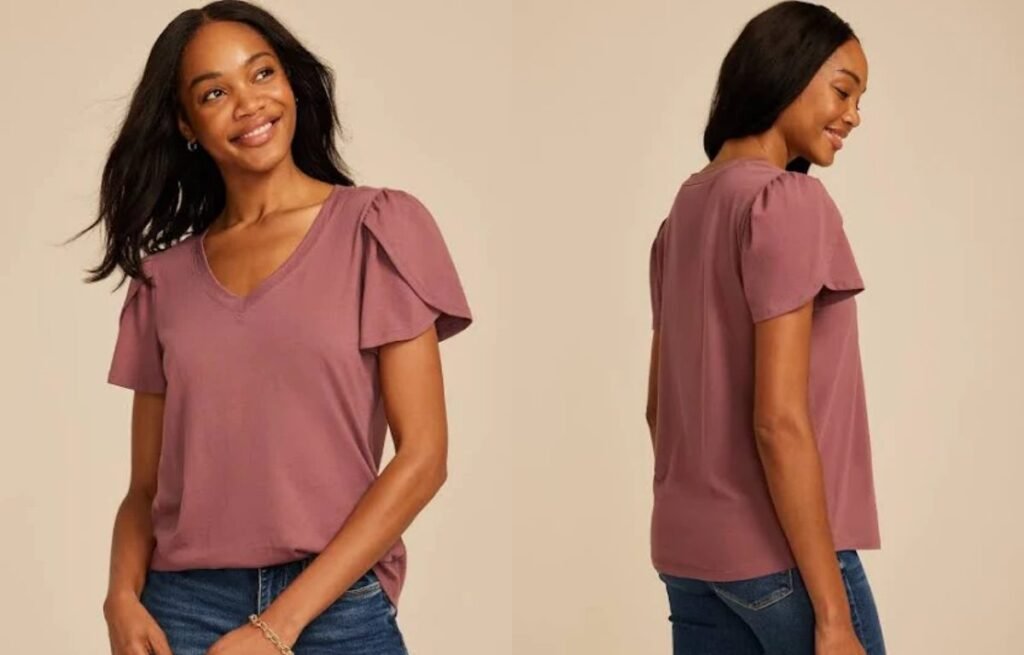
What makes tulip sleeves a soft and stylish detail in women’s fashion?
They’re subtle but create a delicate and flattering shape.
Tulip sleeves are short sleeves that overlap in the front like flower petals, forming a soft, rounded shape around the upper arm. This design adds elegance and femininity without volume or bulk.
I used tulip sleeves on a crepe blouse for one of my capsule collections—they added just enough charm without complicating the silhouette.
How are tulip sleeves constructed differently from regular short sleeves?
It’s the wrap-over cut that creates the tulip effect.
Unlike basic short sleeves, tulip sleeves are made from two curved panels that overlap at the top of the arm, usually sewn into the armhole with the “petal” effect facing outward. This creates a natural soft curve and fluid finish.
They often don’t require gathering or pleats, which makes them a clean yet elegant choice for blouses and dresses.
Sleeve construction comparison:
| Feature | Tulip Sleeve | Standard Short Sleeve | Cap Sleeve |
|---|---|---|---|
| Construction | Overlapping petal panels | One-piece round cut | Minimal, sits on shoulder |
| Shape | Rounded and layered | Flat and basic | Small, semi-structured |
| Style impression | Feminine and soft | Simple and casual | Clean and sharp |
What fabrics highlight the tulip sleeve’s petal shape?
Soft and light fabrics are best to maintain the natural curve.
Fabrics like crepe, rayon, silk, and lightweight woven cotton allow the sleeve to drape softly without stiffness. These materials enhance the petal overlap without looking bulky.
In one project, I used matte crepe—it held the curve gently and looked polished in both casual and dressy settings.
Recommended fabrics:
- Crepe
- Rayon
- Silk or satin
- Lightweight cotton
What garments and customer profiles suit tulip sleeves best?
They’re perfect for customers who want a soft, feminine touch without drama.
Tulip sleeves work well on blouses, shift dresses, sheath dresses, and semi-formal tops. They’re popular in women’s workwear and spring collections, appealing to buyers who love detail but prefer a refined look.
If your customers are drawn to minimalist but feminine styles, tulip sleeves are a safe and elegant feature.
Best applications:
- Work blouses
- Occasion shift dresses
- Semi-formal tops
- Resort dresses with soft silhouettes
Bell Sleeve
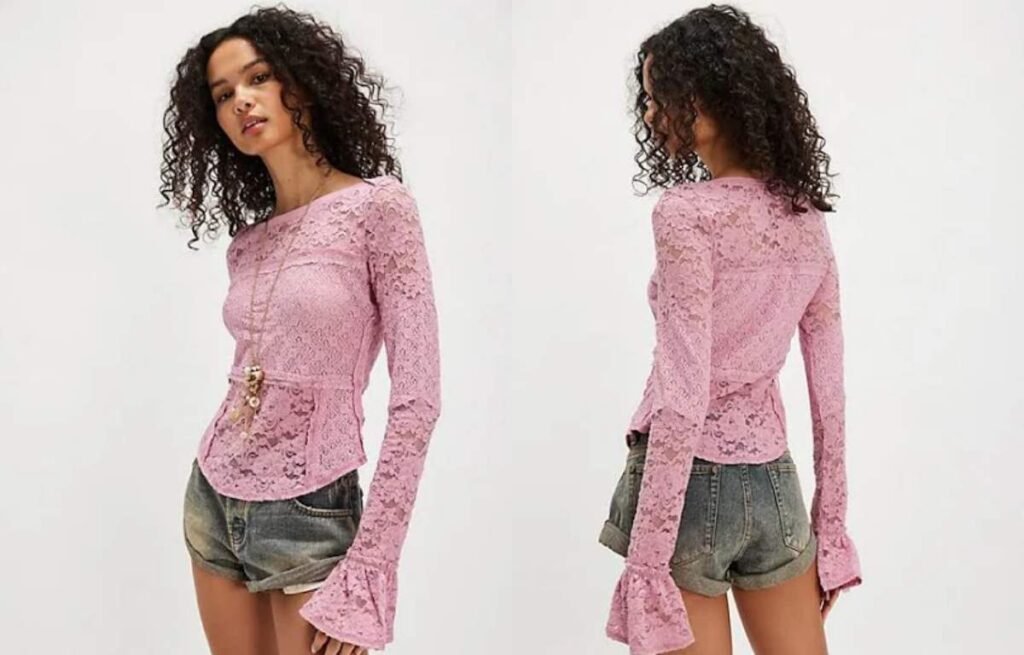
Why are bell sleeves a versatile and expressive element in women’s fashion?
They bring volume, flow, and a sense of movement to any design.
Bell sleeves are fitted at the shoulder and upper arm, then flare out below the elbow or wrist into a wide, bell-like shape. This creates a dramatic yet elegant effect that suits both casual and formal styles.
I included bell sleeves in a boho-style dress for a boutique client—the sleeves instantly elevated the whole look without needing extra detailing.
What defines a bell sleeve and how is it different from similar flared styles?
It’s all about the smooth flare from narrow to wide.
Bell sleeves gradually widen toward the hem, unlike puff or balloon sleeves which gather at the ends. They usually start slim at the bicep or elbow and extend downward in a flared shape, giving soft volume and visual interest.
This sleeve is often associated with bohemian, romantic, or vintage-inspired looks, but can be styled in modern silhouettes as well.
Style comparison chart:
| Feature | Bell Sleeve | Balloon Sleeve | Flared Sleeve |
|---|---|---|---|
| Shape | Gradual flare | Voluminous and gathered | Flare varies in position |
| Start point | Elbow or lower | Shoulder or bicep | Anywhere on sleeve length |
| Hem style | Open, flowing | Usually gathered or cuffed | Open or split |
What fabrics work best to create beautiful bell sleeves?
The drape and weight of the fabric matter most.
Soft, medium-weight fabrics like rayon, crepe, silk blends, or light knits give bell sleeves structure without stiffness. These materials allow the sleeve to hang gracefully while still holding the bell shape.
In one dress I developed, we used rayon crepe—it gave a luxurious feel and the sleeve flowed beautifully with every step.
Recommended fabrics:
- Rayon crepe
- Silk blend
- Cotton voile
- Lightweight jersey
Which garments and audiences are best suited for bell sleeves?
This sleeve suits expressive, romantic styles across various age groups.
Bell sleeves work well on dresses, tunics, blouses, and lightweight outerwear. They’re popular in boho, resort, and feminine officewear collections, appealing to buyers who want graceful drama without going over the top.
They’re also a favorite for Gen Z and Millennial buyers who love retro or festival-inspired fashion with a modern twist.
Best applications:
- Bohemian dresses
- Flowy tunics
- Wrap blouses
- Festival and resortwear
Ruffle Sleeve
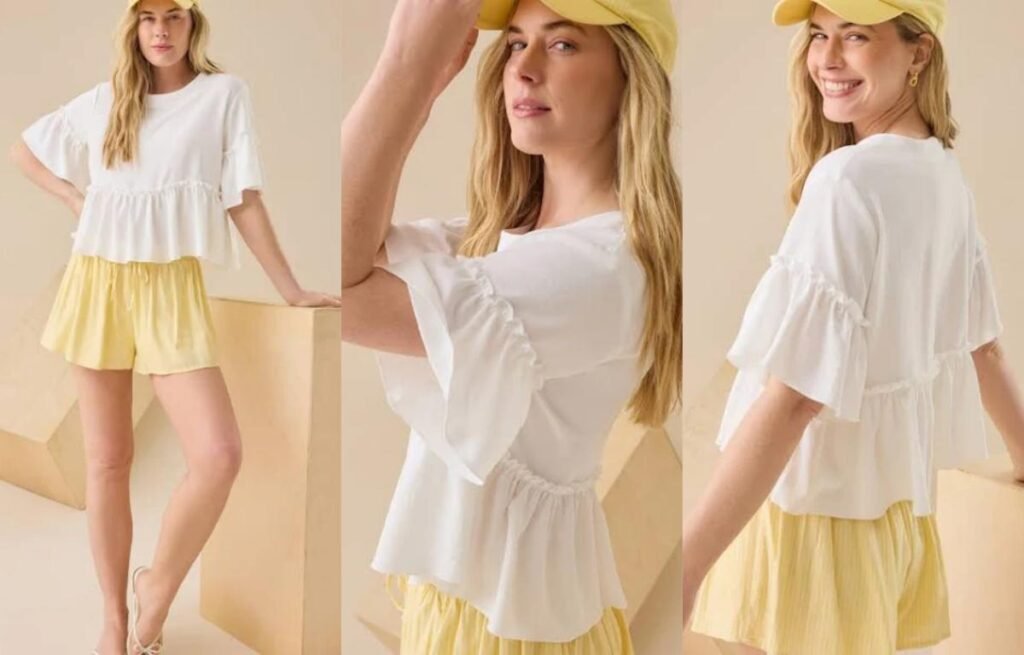
Why are ruffle sleeves a go-to choice for adding flair in women’s fashion?
They add instant charm and volume—without heavy construction.
Ruffle sleeves are made by gathering or layering fabric along the sleeve edge or throughout the sleeve, creating a frilled, feminine effect. They add playfulness, texture, and movement to otherwise simple silhouettes.
I once used triple-tiered ruffle sleeves on a poplin blouse for a summer launch—it became the most eye-catching piece in the lookbook.
How are ruffle sleeves designed and how do they differ from flared or pleated styles?
It’s all about the gathered fullness.
Unlike flared sleeves that widen gradually, ruffle sleeves use gathered fabric to form a wave or ripple effect. They can be added at the hem, layered along the sleeve, or used as standalone flounces for a sculptural look.
This sleeve style balances well with fitted bodices, bringing energy and a touch of drama.
Sleeve comparison:
| Feature | Ruffle Sleeve | Flared Sleeve | Pleated Sleeve |
|---|---|---|---|
| Construction | Gathered or layered fabric | Gradual widening | Folded in fixed pleats |
| Texture | Wavy, voluminous | Smooth, flowing | Structured, directional |
| Best effect | Playful and romantic | Elegant and fluid | Sharp and refined |
What fabrics enhance the look of ruffle sleeves?
Fabric weight defines how the ruffles fall or bounce.
Lightweight and soft fabrics like chiffon, voile, organza, or cotton lawn create delicate, airy ruffles. Heavier fabrics like poplin or linen add more volume and a crisper wave.
I once designed a layered ruffle sleeve in organza—it was sheer, dramatic, and still light enough to wear in warm weather.
Suggested fabrics:
- Chiffon
- Cotton lawn
- Voile
- Organza
- Poplin (for structured ruffles)
Which garments benefit most from ruffle sleeves?
Perfect for youthful, expressive, and feminine fashion lines.
Ruffle sleeves are often used on dresses, tops, and blouses designed for spring/summer collections. They appeal to customers who want a flirty, trend-driven detail—especially for resortwear, brunch looks, and Instagram-ready styles.
They’re also great for brands that want to offer visual interest without bold prints.
Best applications:
- Tiered summer dresses
- Peasant blouses
- Cropped statement tops
- Romantic evening tops


